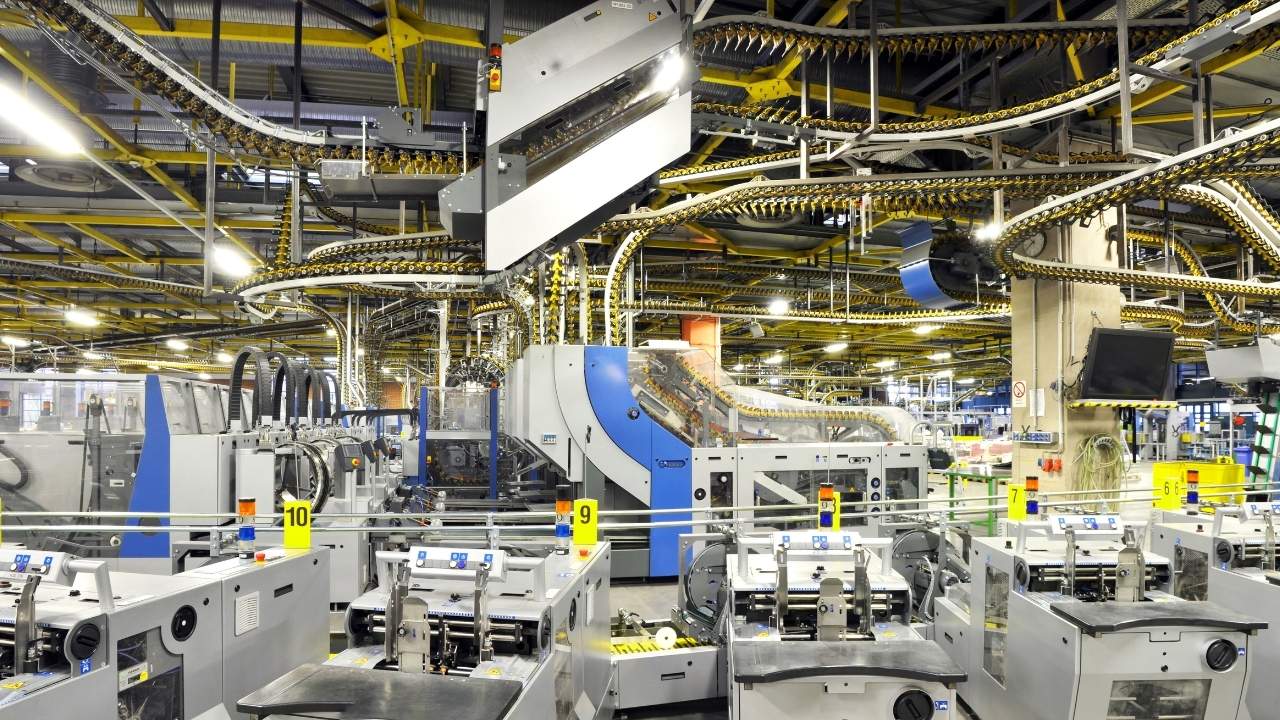Implementing an ERP system in the manufacturing industry can be a game-changer. These powerful solutions streamline processes, enhance resource management, and drive significant cost savings. By integrating all facets of operations, manufacturers can achieve reduced waste, improved efficiency, and optimized resource allocation, ultimately boosting profitability and competitiveness in the market.
Cost Optimization and Resource Allocation with an ERP built for the Manufacturing Industry
With mounting competitive pressures and fluctuating market dynamics, manufacturing enterprises today face escalating production and operational costs. Managing costs is critical for maintaining decent profit margins and business sustainability, from soaring raw material expenses to growing labor charges and overheads. However, the traditional approach of across-the-board cost-cutting often impacts product quality, delivery schedules, and customer satisfaction negatively.
The smart way forward is to optimize costs through efficient resource allocation, waste reduction, and continuous improvement. This is where an ERP solution built for the manufacturing industry can prove invaluable with its end-to-end visibility, useful data, and automated workflows. This article discusses key cost drivers, leveraging ERPs for informed decision making as well as specific strategies enterprises can adopt to optimize their cost structure.
Understanding Major Cost Drivers
To optimize expenses, manufacturers must first identify factors driving up costs significantly. Major contributors include:
- Direct Material Costs: Expenses for raw materials and bought-out components constitute the largest cost bucket. Fluctuations in commodity prices also impact overall production costs.
- Labor Expenses: Wage rates and labor hours are major cost heads, especially in labor-intensive industries like textiles, furniture, etc. High attrition levels also inflate training and hiring costs.
- Energy Overheads: Utilities like power and fuel to run large plants and machinery can take a huge toll on bottom lines. Production processes require significant heating/cooling, and machine loads add to these overheads.
- Wastages: Defect rates leading to rework/rejects, excess inventory carrying costs, overproduction, and suboptimal asset utilization are huge sources of waste that reflect inflated manufacturing costs.
Assessing Current Manufacturing Costs and Resources
The starting point for cost optimization is to thoroughly analyze current spending. Key aspects include:
Production and Operational Cost Analysis
ABC analysis helps assign manufacturing costs and overheads to individual products, orders, and processes accurately based on consumption. Analytics identify high-cost production activities.
Evaluation of Cost Drivers
Drill down analysis to pinpoint root causes inflating costs like inefficient processes, poor quality, inadequate planning, etc. instead of just top-level categories.
Resource Utilization Analysis
Evaluation of current asset utilization percentages across departments like order processing, inventory holdings, and equipment effectiveness identifies capacity constraints inhibiting efficiency.
Strategic Spend Analysis
Should cost modeling, contract evaluation, etc. provide levers to reduce external procurement costs which constitute over 50% in some industries through better supplier terms, spot buys etc?
Leveraging ERPs for Decision Making
Modern ERP systems provide extensive features and data to help manufacturers track cost drivers, identify problem areas, and make informed decisions. Key capabilities include:
- Production Planning and Scheduling: ERP modules optimize load distribution across work centers. Machine utilization monitoring prevents overproduction and controls utility costs.
- Inventory Control: Stock level alerts, economic order quantity calculations, and demand planning help regulate inventory holding costs by reducing excess/out-of-stock situations.
- Spend Analytics: Contract management, cost modeling, and spot buy analysis provide clarity on procurement expenses so corrective actions can be taken.
- Cost Tracking: Activity-based costing, cost center accounting, and profitability analysis give visibility into product/service costs to drive informed pricing.
- Analytics and Reporting: Embedded BI tools provide actionable dashboards, KPI monitoring, and drill-down reports to identify and control cost drivers.
Strategies for Cost Optimization
Leveraging the above ERP functionalities, manufacturers can drive optimization via strategies like:
- Process Standardization: This lean manufacturing technique eliminates non-value activities, enhances workforce productivity and cuts down on quality issues to reduce costs.
- Inventory Optimization: EOQ-based procurement, selective inventory, and JIT production lower carrying costs. Warehouse automation and radio frequency devices provide visibility for reducing losses.
- Production Scheduling: Load balancing across work centers, constraint-based scheduling as per TOC principles, small batch sizes, and streamlined changeovers enhance asset utilization and throughput.
- Budgeting: Activity-based budgeting using historical data allows better cost allocation. Actual vs projected variance analysis improves monitoring and control.
- Total Productive Maintenance: Instead of reactive breakdowns, TPM focuses on preventive maintenance. This reduces downtimes as well as the cost of repairs and spare inventory.
Optimizing Production Planning, Scheduling and Processes
With clarity on cost drivers, manufacturers can leverage ERP optimization tools for:
Strategic Demand Planning
Aligning production plans and schedules with the latest sales forecasts and S&OP output ensures capacity meets fluctuating market demand at optimum cost.
Preventive Maintenance Scheduling
Scheduling maintenance to maximize output at the start of peak production cycles reduces the frequency of breakdown outages. This cuts downtime, maintenance expenses, and rush orders.
Dynamic Job Routing
Work order scheduling considers balanced workloads across resources. Alternate routings to avoid constraints also prevent escalations and delays.
Streamlined Change Management
Quick changeovers using the SMED technique boost asset turns. Flexible lines adapt to demand changes faster with lower cost than dedicated machinery.
Process Standardization
Documenting standardized operating procedures based on best practices minimizes waste. Compliance ensures consistency even with workforce changes.
Streamlining Inventory and Supply Chain Management
With continuous production, excess inventory piles unnecessary holding costs. ERP optimization levers like:
Automated Reorder Points
Ensuring parts replenishment when the stock reaches defined levels minimizes the risk of stoppages. This requires integration with suppliers via EDI.
Optimized Order Quantities
EOQ models balance holding versus ordering costs. JIT procurement aligns supplier deliveries with production schedules.
Material Requirements Planning
MRP helps optimize lead times and safety stocks across multi-level BOMs, enhancing visibility and agility.
Building a Culture of Continuous Improvement
A key aspect of sustaining a cost optimization culture is to make improvement a continuous journey through initiatives like:
- Workflow Automation: Using BPM tools to map, simplify, and automate repetitive manual processes not only boosts productivity but also reduces labor costs and errors.
- Simulation Modeling: ERP data can feed simulation models for scenario analysis, what-if projections, and decision support without disrupting real production.
- Kaizen Events: Small yet frequent improvements via collaborative brainstorming sessions help change mindsets towards positive innovation. Gradual changes cause less resistance.
- Performance Monitoring: KPIs around cost drivers, process efficiency, system utilization, etc coupled with regular audits help sustain optimized processes and practices.
Overcoming Implementation Challenges
However powerful the capabilities of an ERP solution for the manufacturing industry in realizing benefits requires overcoming typical challenges that crop up during optimization initiatives:
Defining Metrics and KPIs
While ERP systems provide extensive data, identifying specific metrics to track the progress of optimization efforts is vital. KPIs around cost drivers, process efficiency, system utilization, etc. should be selected in consultation with key stakeholders and program leaders.
Managing ERP Implementation
Complex software implementations often become lengthy, costly affairs exceeding budgets and timelines which causes fatigue. Having an agile rollout plan focused on critical processes first is key along with extensive training and change management.
Integrating Related Systems
As optimization needs end-to-end visibility across the production value chain, integrating ERP with other systems like MES, PLM, etc using APIs and common data models may be required. Reliable interfaces become paramount.
Securing User Adoption
Lack of adoption, particularly on shop floors, can make or break initiatives. Having super users train teams using simulations, games and rewards rather than just top-down directives improves engagement.
Sustaining Improvements
Periodic internal audits by QA teams help sustain optimized processes. Compliance with defined workflows also prevents backsliding. Continued enhancement of ERP with emerging technologies like IoT, AI, etc. can also drive lasting benefits.
The optimization journey calls for patience but the rewards can be reaped for years via sustainable savings, quality, productivity, and profitability gains. With adaptive change management and reliable technical capabilities, an ERP for the manufacturing industry paves the path to drive cost optimization in a methodical manner.
Key Takeaways:
This article provided a comprehensive guide to optimizing production costs using the extensive features of modern ERP Solutions for the manufacturing industry. It covered:
- Identifying Key Cost Drivers: Direct materials, labor, utilities, and waste areas like defects, inventory, etc.
- Leveraging ERP Analytics for Informed Decisions: Modules for planning, cost tracking, and analytical reports.
- Strategies for Driving Optimization: Process standardization, better scheduling, productivity techniques like TPM, etc.
- Building a Culture of Continuous Improvement: Through workflow automation, simulation modeling, kaizen events, etc.
- Overcoming Implementation Challenges: Defining metrics, managing integrations, and securing user adoption.
With growing cost concerns across manufacturing sectors, optimizing operational costs by leveraging ERP capabilities can drive substantial bottom-line savings while boosting quality, productivity, and profitability KPIs.
Benefits of Versa Cloud ERP for the Manufacturing Industry
With rising complexities across modern shop floors, manufacturers require an adaptable yet robust ERP platform that goes beyond basic automation to drive analytics-led cost optimization plus efficiency gains.
Versa Cloud ERP delivers end-to-end capabilities spanning procurement, inventory, production planning, quality management, finance, and more on a unified cloud platform boasting reliability, security, and scalability.
Core solutions like inventory and warehouse management provide real-time visibility and movement tracking both within premises and across outsourced facilities. Dynamic reorder management aligns with the latest demand shifts responding better than legacy systems. Bills of materials coupled with powerful analytics offer should-cost modeling for strategic sourcing.
Versa’s manufacturing solutions enhance production agility with scheduling what-if simulations, constraint-based load balancing, total productive maintenance, and mobile data access. Support for IoT and 3PLs simplifies integration with automation devices and logistics providers enabling seamless data flows across the value chain.
With Versa Cloud ERP’s contemporary architecture, manufacturers achieve faster time-to-benefit and lower TCO than legacy systems. The intuitive interfaces ensure high user adoption from the shop floor to the top floor for driving enterprise-wide optimization.
Ready to transform your cost structure and realize a highly efficient, insight-driven operation? Schedule a free personalized demo of Versa Cloud ERP today to quantify the benefits across key metrics spanning working capital, carbon footprint, inventory turns, asset utilization, and more. The future of smart manufacturing powered by optimized processes and costs is closer than ever!
Empower your business with the knowledge to navigate the realm of an Integrated ERP solution, specifically tailored to your business needs. Gain insights, streamline processes, and propel your financial management to new heights with this comprehensive guide
With Versa Cloud ERP’s Implementation guide learn how a business can ensure a successful ERP Solution Implementation. Navigate the complexities of implementation with confidence!
Effectively manage your financials, accounting, inventory, production, and warehouse management workflows with our award-winning ERP.
Let Versa Cloud Erp’s do the heavy lifting for you.
[widget id=”custom_html-40″]
[widget id=”custom_html-42″]
[widget id=”custom_html-30″]
Do Business on the Move!
Make your businesses hassle-free and cut the heavyweights sign up for the Versa Cloud ERP today!!
Join our Versa Community and be Future-ready with us.
[widget id=”custom_html-20″]






